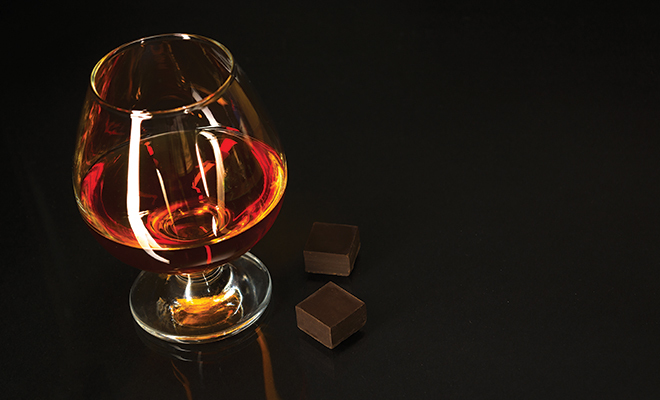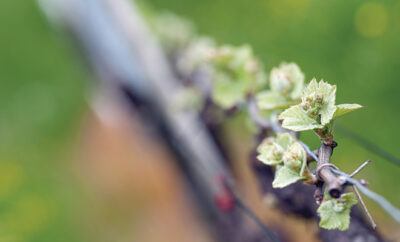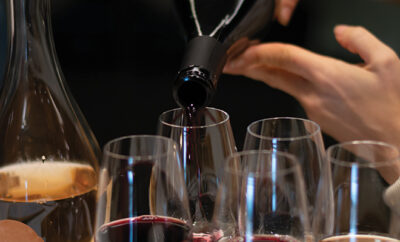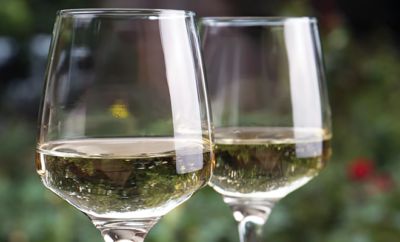
Sweet Decadence: Port, Brandy and Cognac
Even though we just polished off the pumpkin and pecan pies, survived the cookie exchange parties and brought in another New Year filled with weight loss and lifestyle goals, it’s time for another sweet season.
It’s that time of year when the indulgences of love pop up seemingly everywhere you turn. Every restaurant, local shop and bakery has sweet specials for your valentine. We love celebrating love. And Valentine’s Day isn’t just for the couples; it’s for giving a token of affection and appreciation to people in your life. Parents, friends, coworkers, bosses and even your hairdresser are very appreciative of a remembrance during this time of year.
There are plenty of options!
If you’re adventurous in wine, there are great gifts of ports and dessert wines waiting for you to taste and purchase for yourselves and others. As a first-level aperitif containing an alcohol content in the 17 to 25 percent range (or more), ruby port and tawny port are relatively easy to find at your favorite wine-tasting room or supermarket wine department.
Portugal’s Douro Valley is the viticultural region that grows more than 50 red and white grapes used for making port. Porto, Portugal’s coastal city at the mouth of the Douro River, gives the wine its name. It begins life in the same way other wines do, with picking, pressing and fermenting. When the alcohol level of the grape must reaches 7 percent, brandy is added to bring the fermentation process to a halt. This fortification prevents the grape sugars from continuing their conversion to alcohol and leaves the sugar content higher than most still wines.
If your port palate prefers a bright berry fruit that’s easy to enjoy with blue cheese, chocolate, fruit or fruit desserts, you may be inclined to seek out a ruby port, which is generally less than five years old, un-aged in wood barrels. Savory and spicy layers of fruit will be found in tawny styles of port, conveying a sense of oak from their oak barrel aging cycles. Tawny ports show off their complexities with cheese plates and chocolate desserts. Serve both wines in cordial or cognac glasses to keep the aromas and flavors confined but accessible. Considering the higher content of alcohol compared to the usual glass of table wine or champagne, it’s preferable to serve port in small quantities
The next level: Brandy and Cognacs
Stepping up your wine-love might include trying brandies, cognacs and grappa, which derive from wine production as well.
Brandy is made by distilling wine, believe it or not, and the better the wine, the better the brandy. It’s generally 30 to 65 percent alcohol, pretty potent stuff, filled with aromas that vary from vanilla, baking spices and licorice to musk and even toasted maple. After the wine is heated to a reduced state and separated, this distilled product is then aged in oak barrels.
Grappa is the brandy of Italy, made primarily from the wine grape skins and seeds that are left after the wine-making process. They are distilled once more to produce grappa. In Poland, this product is made from plums and called slivovitz; in Japan, their shochu is made from rice. Even tequila is a brandy made from blue agave plant, an ancient process credited to Jalisco, Mexico. Our American bourbon is made from corn; but of all the distilled brandy products available to modern enthusiasts, it’s generally acknowledged that the finest brandies come from the fine French wines and their processes. Because apples and grapes have such concentrated levels of sugar or fructose, it’s natural that the world’s first civilizations discovered the benefits of fermentation in the form of ciders and brandies as well as wines.
Then we have the lovely cognac. It’s basically brandy, but location is the key to cognac. As with champagne, which utilizes fruit and process from the Champagne region of France, cognac refers to the “where” of this fine wine product that has become a universal icon for success, wealth and victory. For brandy to achieve the distinction of cognac, it must have been produced in the Cognac region of western France. Aging of cognac is key to its reputation, where you will find VS, VSOP or XO as identifiers on the label. VS is the least-aged cognac, priced at $25 to $40 per bottle; it may taste young on the palate, whereas the XO is quite smooth and sought after, sitting in a price range involving many more zeros per serving.
If you’re adding these beauties to your celebrations, you may also consider seeking out chocolates, truffles and sauces made with brandy and cognacs. When you’re careful with serving suggestions and mindful of your audience, a well-placed brandy infused dark chocolate raspberry truffle may be the perfect pièce de résistance to any meal or event.
And it seems that I heard somewhere there are no calories in items that you share with others! Cheers! ■
Source: madehow.com.







